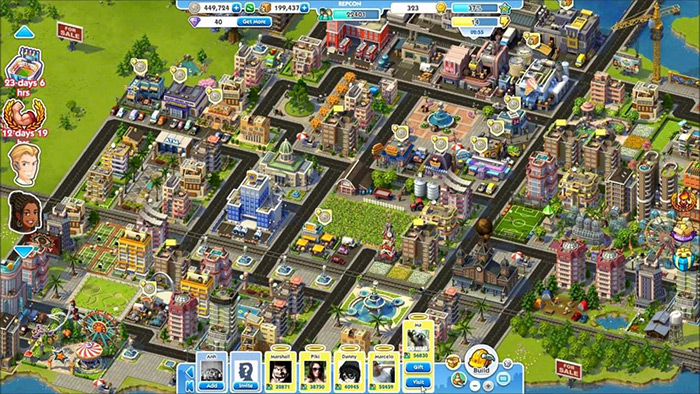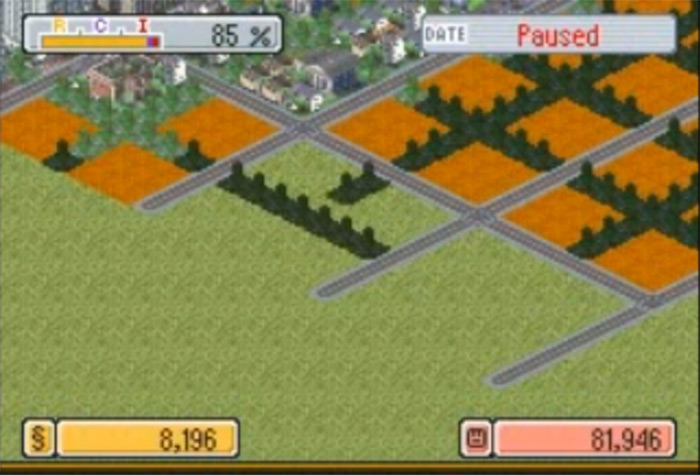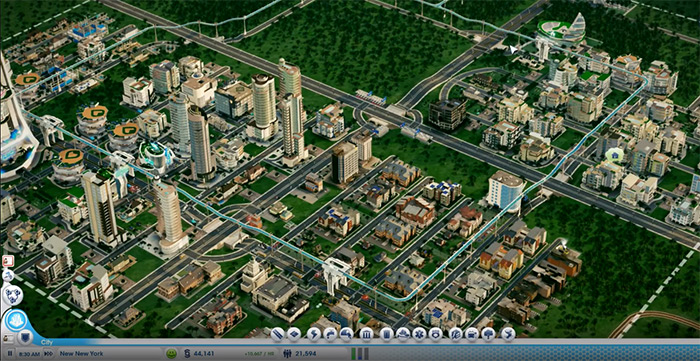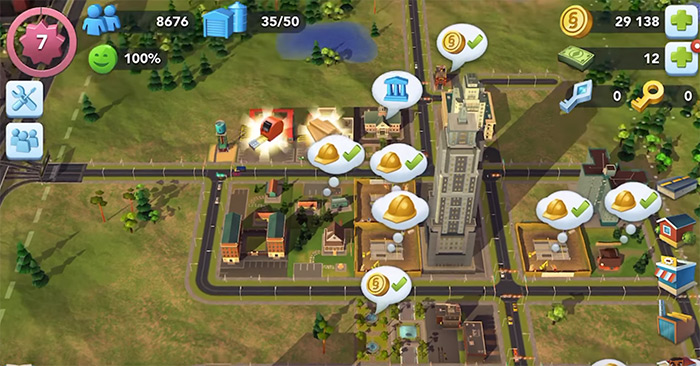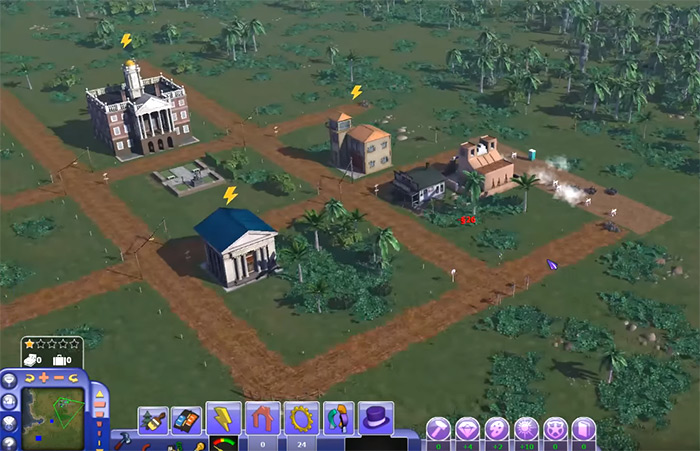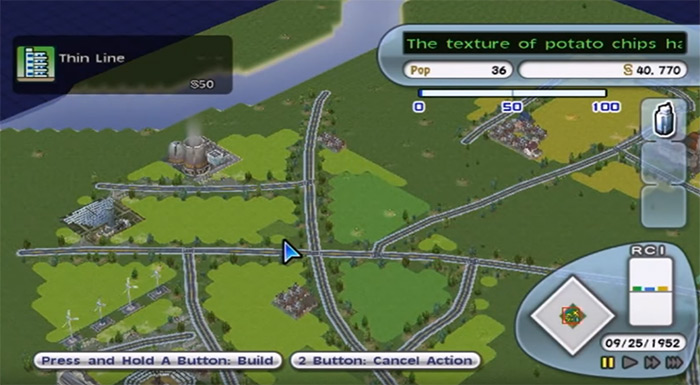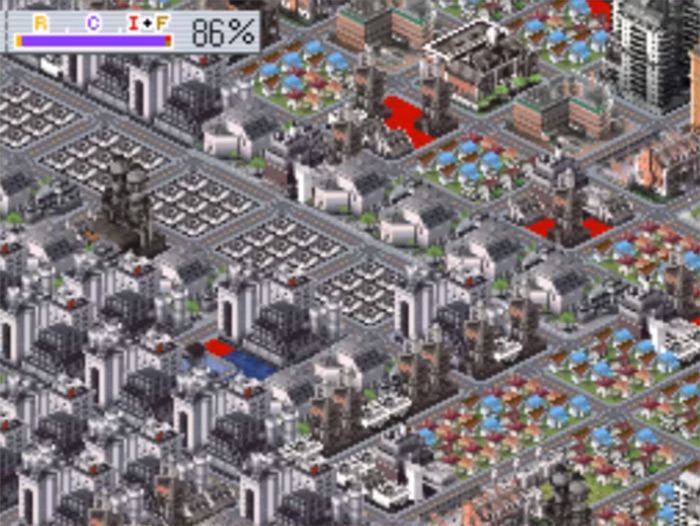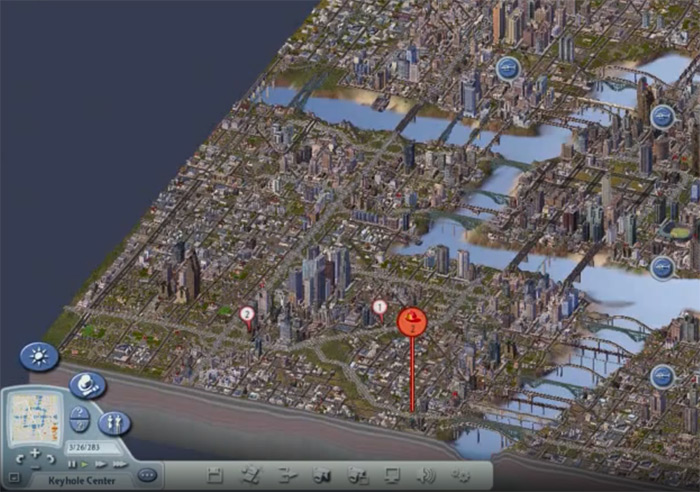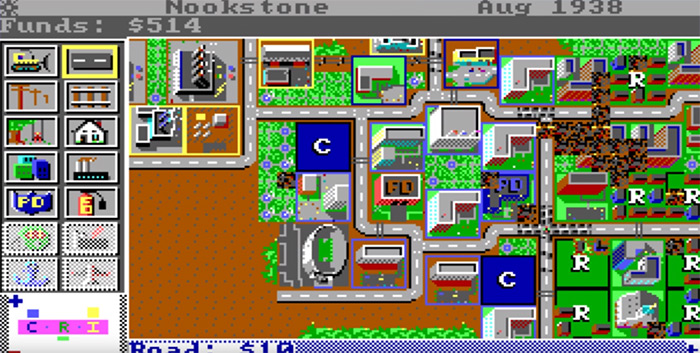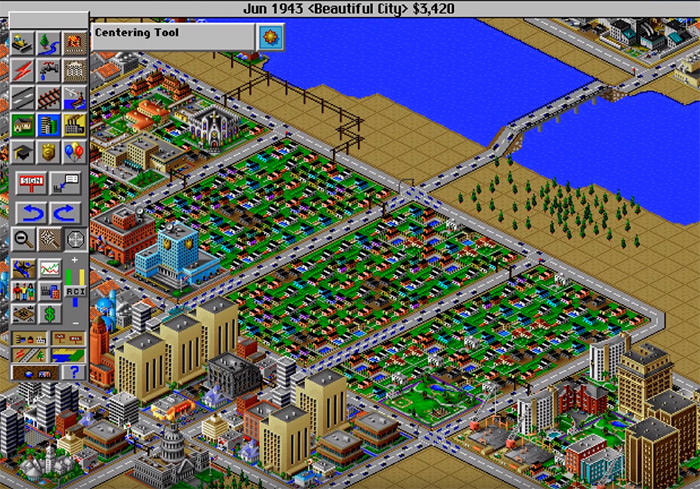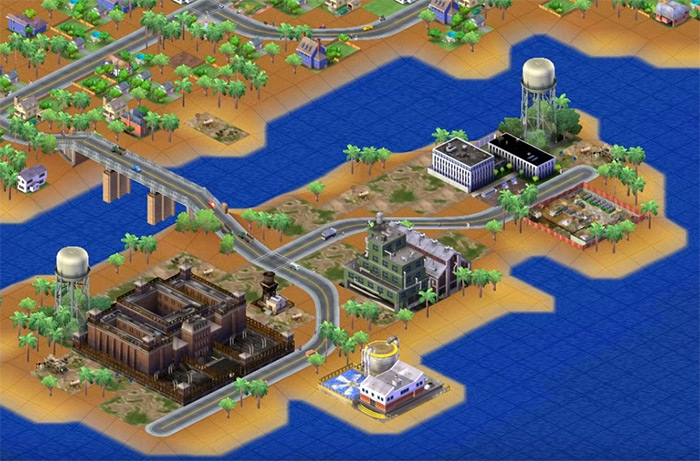It’s all the rage and we love it! But this simulation fever wasn’t always around, and I think it’s appropriate to give some love to the franchise that started it all: SimCity. We’ve all been there. Glued to our screens, mortal bodies left behind in favor of a hovering camera connected to our immortal mayor brain. Hours upon hours poured into designing the perfect city, setting down roads and planning districts, enacting policies for the good of the people and preparing for the disasters on the horizon. SimCity, in most of its forms, is an amazing and immersive experience that’s given most of us irreplaceable memories. But let’s be real: most of us don’t usually have the time to watch a city go from population 1 to bustling metropolis. And when we do, we want to have the best time possible. For that very reason I’ve decided to rank all the main SimCity games so you can best choose which games to pour your time into.
11. SimCity Social
Well truth be told, it’s not like you need to do anything to avoid SimCity Social. On the contrary, you’d have to pull some complicated stunts in order to run this Facebook game. It was released in June 2012 but only ran for about a year until EA decided to shut it down to focus on other projects. As you may expect from a Facebook game, it suffered from the classic maladies such as micro-transactions and a very simple game-play designed to entertain your half-dead gray matter while you were on the page. That said, for a Facebook game it was a relatively fun resource management game with a pretty art-style, at the very least worthy of mentioning in this list.
10. SimCity DS
Moving onto something more serious we have the very ambitious SimCity DS. It was developed by the Japanese branch of EA and published in 2007 by the same company, taking assets and game-play mechanics from older titles such as SimCity 3000 and modifying them to better fit the portable experience. Overall they almost managed to create a pretty good and complex game. But it fell short of greatness thanks to a series of bad decisions. To start off with, the art-style they went with for anything not directly pulled from older games was horrible. It was most noticeable on the advisors which you couldn’t even turn off to avoid their ugly faces blemishing your screen. The game also starts running somewhat poorly and lags a lot once your city reaches a high development stage. In the end, SimCity DS is an ambitious game with a mediocre execution. But I do give it some points for having brought the franchise to portable devices.
9. SimCity: Cities of Tomorrow
Speaking of ambition and failure, let’s talk about one of the biggest disappointments EA has ever been responsible for(and that’s saying something). The 2013 SimCity reboot, developed by Maxis and published by EA for the PC and Mac, was supposed to bring the simulation to the next level with its GlassBox engine. This engine replaced simulating general values and creating visuals to match them with simulating actual individual agents, citizens if you will, and then calculating the rest based on their actions. However all it managed to do at launch was bring EA’s inadequate servers down, which was a major problem considering it required you to remain online at all times if you wished to play. This, along with a pile of bugs and the GlassBox engine being quite unpolished, made for a terrible launch. It took months to get the game up and running correctly. That said, once they did fix it (and once they added offline play) the game wasn’t half-bad. In fact, were it not for those launch issues, fans would probably be very split on the question of whether this is the best SimCity game to date. The graphics are beautiful, the simulation detailed and the musical score is a masterpiece. Too bad the damage was already long done. Such disrespectful behavior from publishers towards their customers just cannot be easily forgotten.
8. SimCity BuildIt
After such a failure, EA needed to make up for lost time and start making money. So they decided to capitalize on the next big thing: mobile gaming. They hired developer Tracktwenty to make a mobile SimCity experience and in 2014 released SimCity Buildit. And quite honestly, they did a pretty good job. This game quickly became one of the top grossing apps on Android and iOS thanks to its colorful and attractive visuals (repurposed from the previous SimCity) and its simplified yet engaging game-play, more reminiscent of… any other base management game on mobile systems than of SimCity. Still it remains a fun game that’ll keep your attention for short bursts on the go.
7. SimCity Societies
Before the previous two entries was SimCity Societies, a game that tried to reinvent the franchise and launch it in a new direction more accessible for new players. It was developed by Tilted Mill Entertainment and published by EA in 2007 with fully updated 3D visuals and simplified game-play that focused more on the society of your city than on city planning itself. While still a very fun game, SimCity Societies felt more like a spin-off than a main entry in the series due to these changes. Things like zoning and individual building development were put aside in favor of managing societal values through different means, and these values in turn determined what upgrades were available to you and what your city ended up looking like. It remains a solid fun game if you’re looking for something different. If only it was called SimSocieties…
6. SimCity Creator (Wii)
Next up on the list we have a very unique entry in the series. SimCity Creator was developed by Hudson and released by EA on 2008 for the Wii. Contrary to what you might expect, the game didn’t introduce any wacky motion-control gimmicks, but offered a rather nuanced and fun core SimCity experience with a few tweaks. In this game you’re supposed to develop a civilization and take it from caveman times into modernity and beyond, achieving this through managing their city-state. The complexity of game-play was toned down from previous installments but just enough that it didn’t mess with what makes a good SimCity game, while still making it a tad more palatable for casual players. Although it was considered mediocre by critics at the time, it remains a fun experience if you have a Wii laying around.
5. SimCity Creator DS
SimCity Creator was also released for the DS in the same year bringing a similar experience to portable devices. Unlike its other handheld predecessor, this game had better visuals and ran perfectly fine on the dual-screened device. Critics praised it for cramming so much content into a portable title, although the controls in general felt clumsy and lacking polish. I still think it’s a great option for on-the-go urban planning.
4. Sim City 4: Rush Hour
One of the most memorable entries in the franchise and a favorite of many people. Sim City 4, along with its expansion Rush Hour, are probably the most detailed and complex SimCity games to date. It was developed by Maxis and published by EA in 2003 for PCs and Macs, and it shocked players with its updated graphics, day and night cycles, and interconnected cities. The amount of micro-management you can do is insane. Every little detail can be controlled to affect the bigger picture. Whether it’s way too much micro-management or just enough has been a divide between parts of the community ever since, but nobody questions how much work was put into fleshing it out. The soundtrack is also among the best in the series. Regrettably, the game suffers from serious optimization issues that require it to be run on a monster PC to avoid lagging. The traffic system is also somewhat broken making traffic jams unavoidable with even the most efficient roads. These reasons, among others, keep it from reaching greater heights on our list. If I were ranking modded games, however, this would be at the top. Years of love from the modding community have managed to fix these issues and improve on many features in the game.
3. SimCity Classic
The original game that started the adventure couldn’t be missing from this list. It may not have the most detailed systems or the best graphics, but in 1989 it was a revolutionary game bringing a different experience to the video game market as a whole. This earned it several accolades and awards at the time. It was so successful that it allowed developer Maxis to start churning out a variety of other Sim games such as SimTown and SimAnt in a short amount of time, getting users hooked on the genre and paving the way for future titles. It was originally released on the Commodore Amiga and Macintosh computers, but so far it’s been re-released on many, many more systems. There’s probably a calculator somewhere able to run it along with 1st generation Pokémon games so there’s no reason not to give this game a try if you haven’t yet. Note: I’m also including the SNES version of SimCity here since it was based closely on the original. Let’s say they both tie for 3rd!
2. SimCity 2000
In 1993, four years after the release of the original SimCity, Maxis was at it again with another masterpiece. SimCity laid the true groundwork of what the series would become in further installments. It had updated graphics and an isometric view, along with a much more complex game-play that took what made the original so popular and developed it into a complete experience with new mechanics and a bigger variety of buildings that allowed players to pursue city growth in different ways. For many players, this game remains the best in the series. That may be in great part due to its nostalgia value with its MIDI audio and 90s personality. But that doesn’t mean it isn’t deserving of praise. SimCity 2000 became the foundation on which the follow-ups would be built, not only from a technical standpoint but in the way it allowed Maxis to grow into a bigger company with more resources.
1. SimCity 3000
And what did Maxis do with these new resources? It poured them into SimCity 3000, the sequel and complete overhaul of its predecessor released in 1999. Say what you will, but this game took SimCity 2000 and gave it an extreme makeover with better colors, CD quality music by genius composer Jerry Martin, and an improved simulation with waste management, aging buildings, and neighborhoods that diversified according to the income range of its inhabitants and the land’s value. Not only that, it also made maps four times bigger so you could grow your cities to never before seen sizes. This is, without a doubt, the quintessential SimCity experience and the bar to measure all others against.
